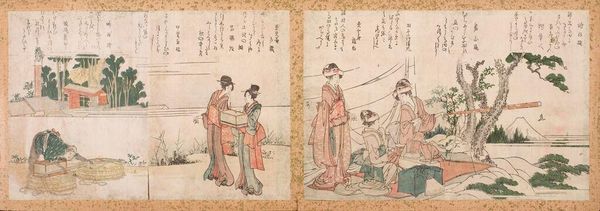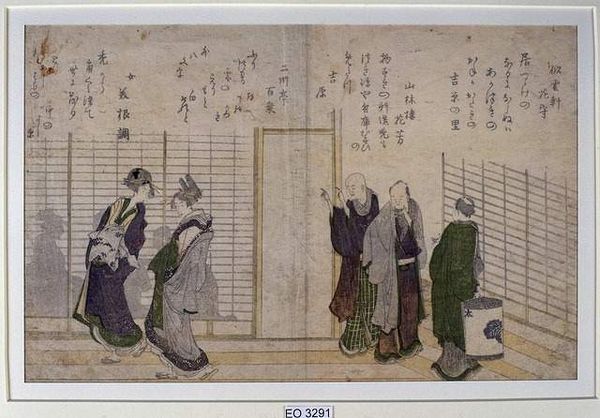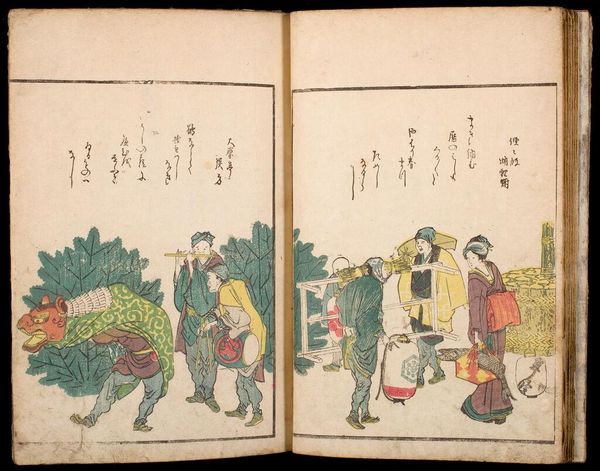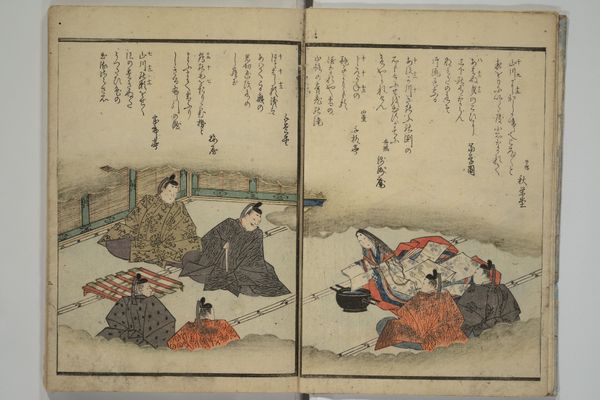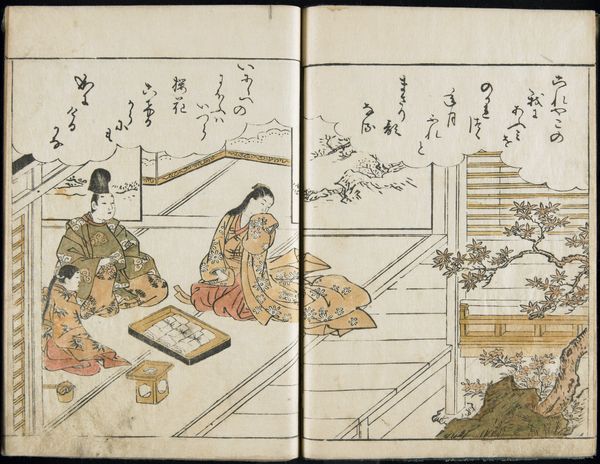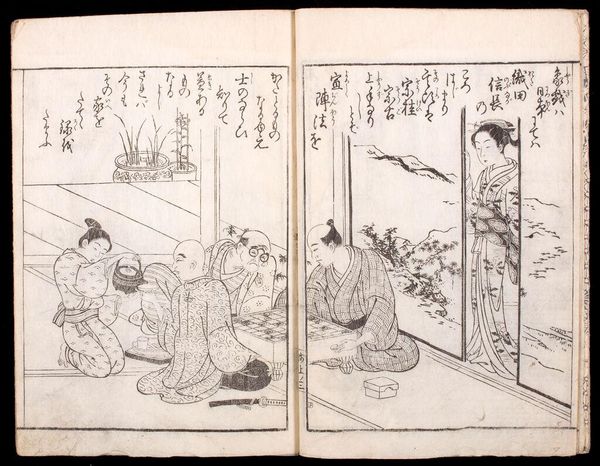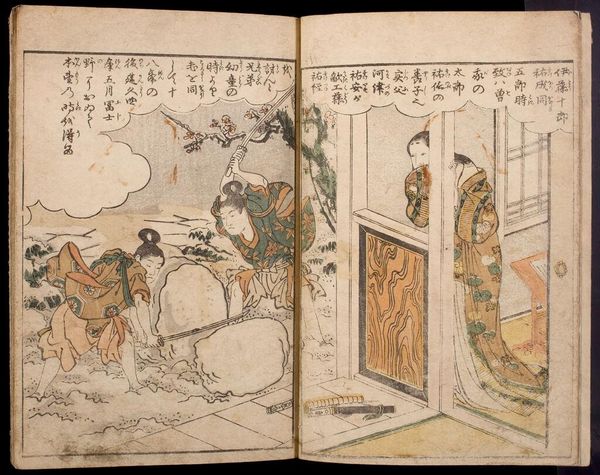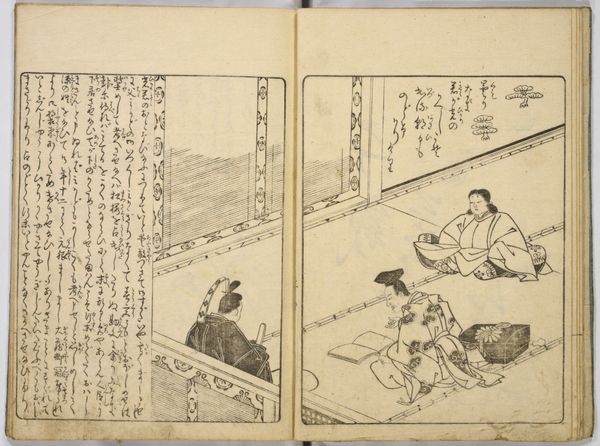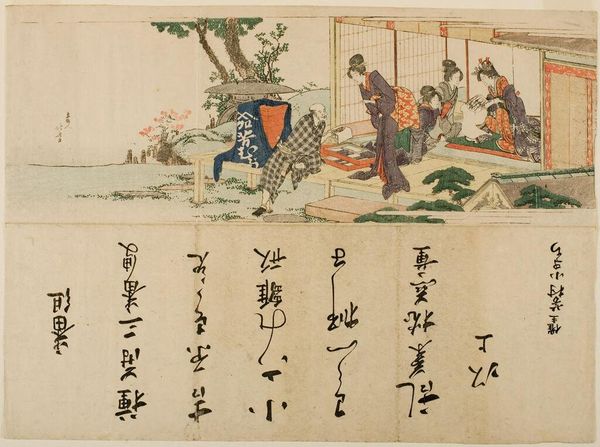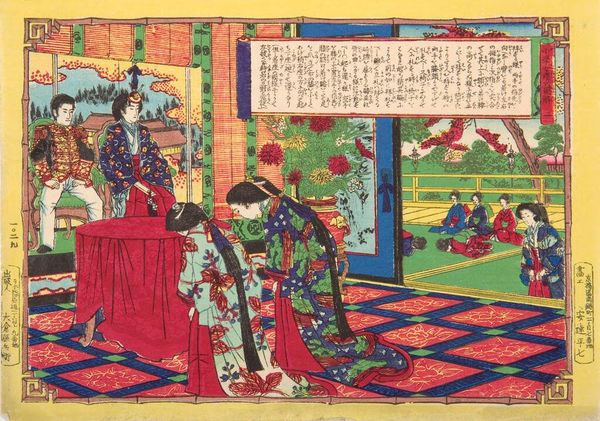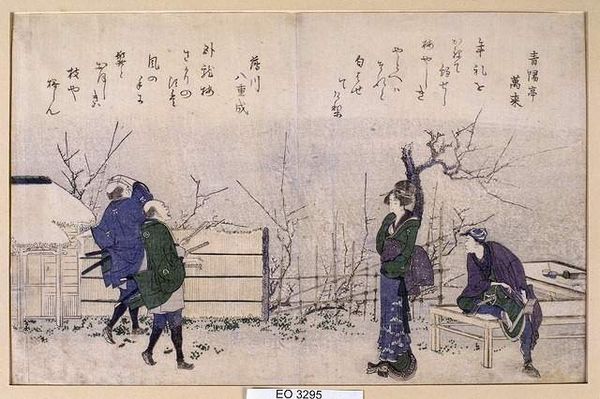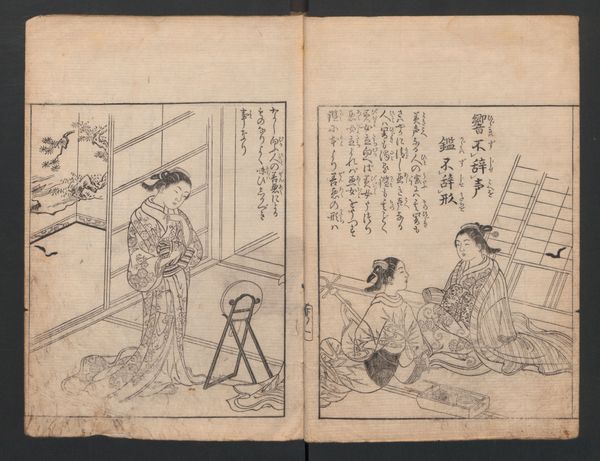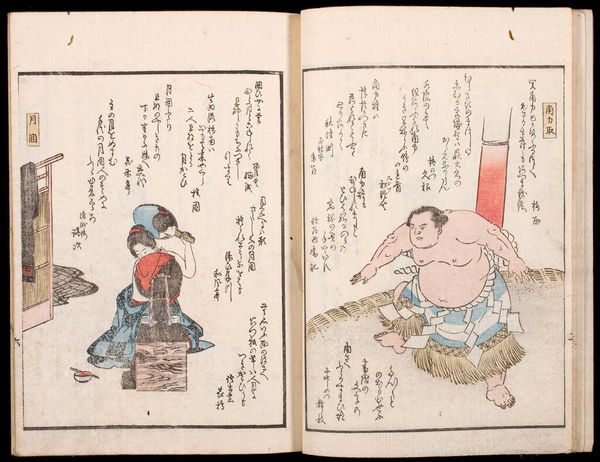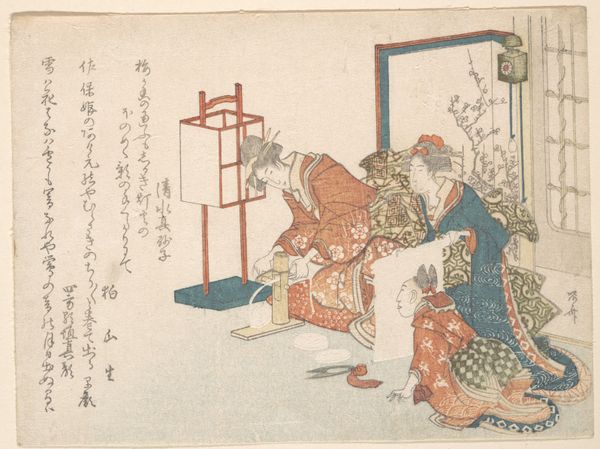
print, paper, woodblock-print
# print
#
impressionism
#
asian-art
#
landscape
#
ukiyo-e
#
paper
#
coloured pencil
#
woodblock-print
#
traditional art medium
#
line
#
sketchbook drawing
#
park
#
genre-painting
Copyright: Public domain
Curator: As we turn our attention to "Spring scene along the Sumida," an unsigned woodblock print attributed to Katsushika Hokusai, what strikes you immediately? Editor: There's a peaceful quality, a sense of ordinary life unfolding in its simple details. I am drawn to the everyday elegance of these figures positioned amidst nature. It feels more observational than staged, a kind of pre-Impressionistic capturing of fleeting moments. Curator: Indeed. This work exemplifies ukiyo-e, literally 'pictures of the floating world.' It's part of a larger cultural movement that celebrated transient pleasures and the beauty found in daily life, a conscious aesthetic turn towards valuing ephemerality and earthly experiences. How do you interpret its contribution? Editor: I see the imagery as democratizing the aesthetic experience, pushing art beyond aristocratic confines. There's a shift from mythological and historical subjects towards scenes accessible to the common viewer—workers, couples, riverside settings like this one. It’s a commercial art capturing the spirit of the rising merchant class in Edo society, offering a new mirror for a changing public. Curator: Absolutely. And consider the Sumida River itself, historically a vital artery of Edo, both for commerce and leisure. The presence of people gathered hints towards its social role as a communal meeting point. Water is also an archetypal symbol for birth, purification, renewal, a natural force underlying our experience. Editor: Do you find symbolism specifically with the attire depicted? To my reading the subjects are differentiated visually and grouped according to social class and occupations—giving more credence to reading this as a form of social record, with attention paid to varying positions within society. Curator: The clothes act as identifiers, signifying professions, roles, and status within Edo's highly structured society. We should remember that visual signs reinforced social cohesion at that time. Editor: Considering Hokusai’s role in shaping visual culture, pieces such as these demonstrate a critical and early step in creating representations and reflections of a broad audience--one seeking art to interpret and solidify a sense of group identity. Curator: A beautiful final thought. "Spring scene along the Sumida," as a work on paper now residing in the Guimet Museum, holds layered echoes about societal changes, symbols, the everyday experiences of common people, inviting reflections even today. Editor: Absolutely, from riverbanks to art galleries, art allows cultural memories and continuous reflections.
Comments
No comments
Be the first to comment and join the conversation on the ultimate creative platform.
